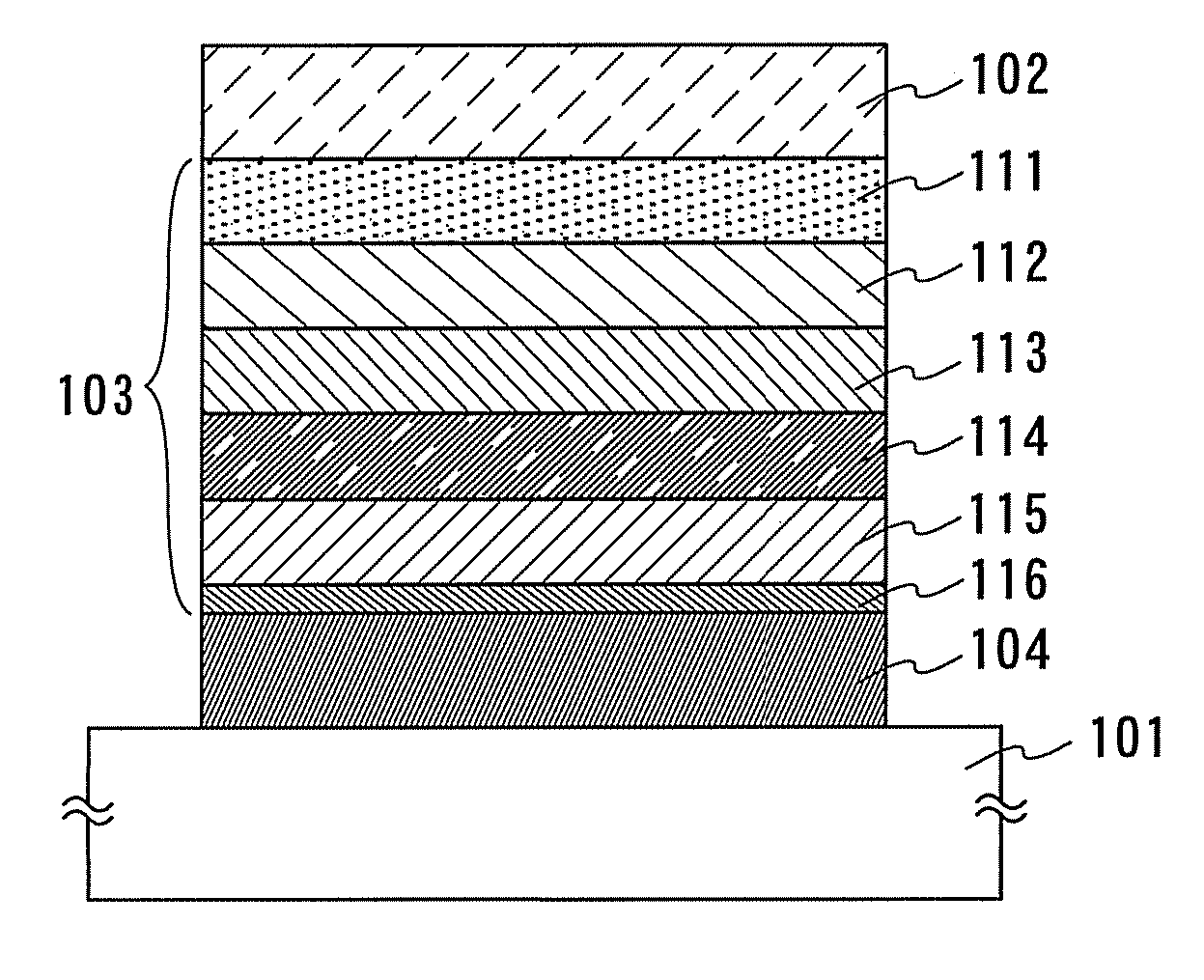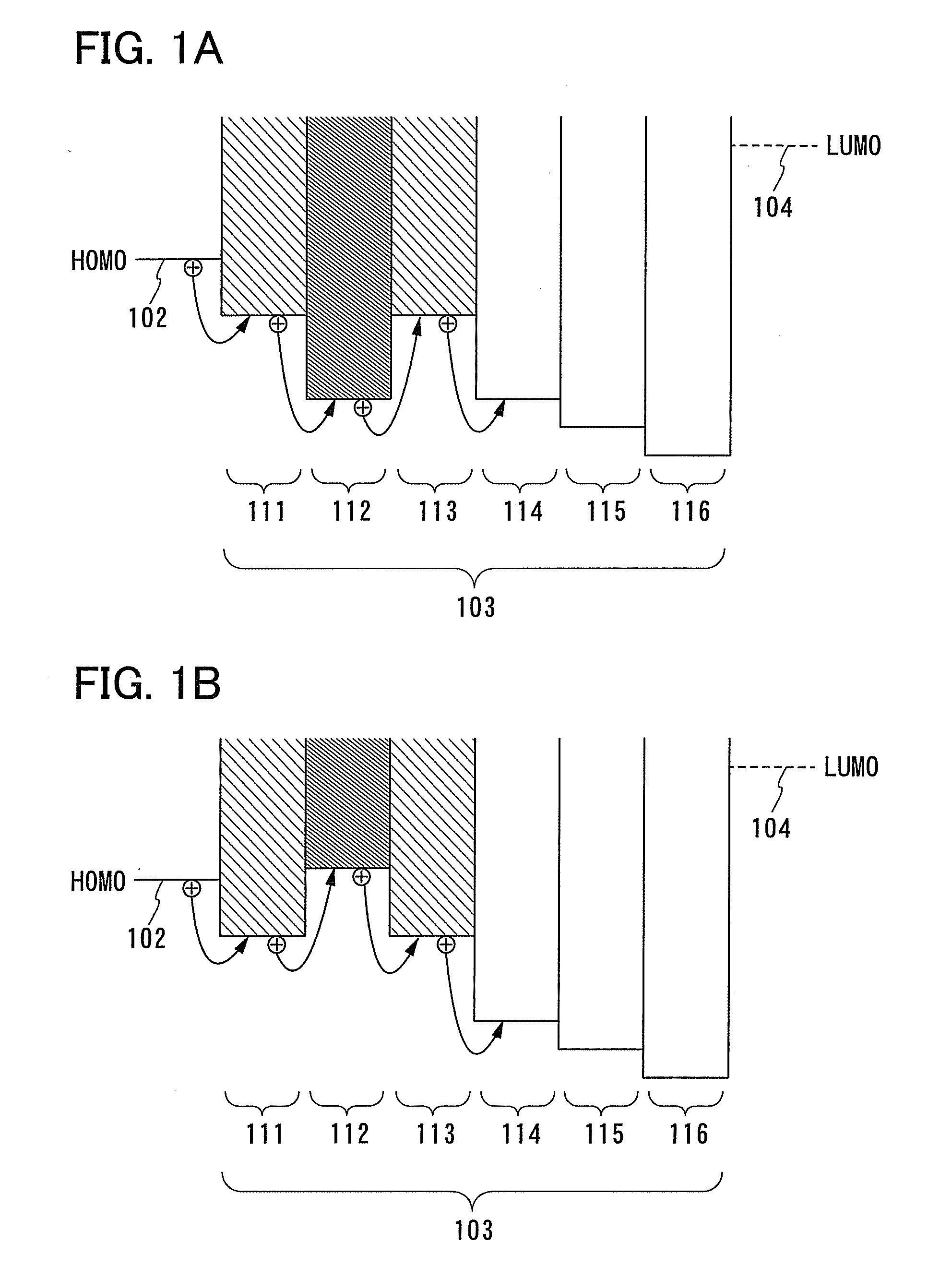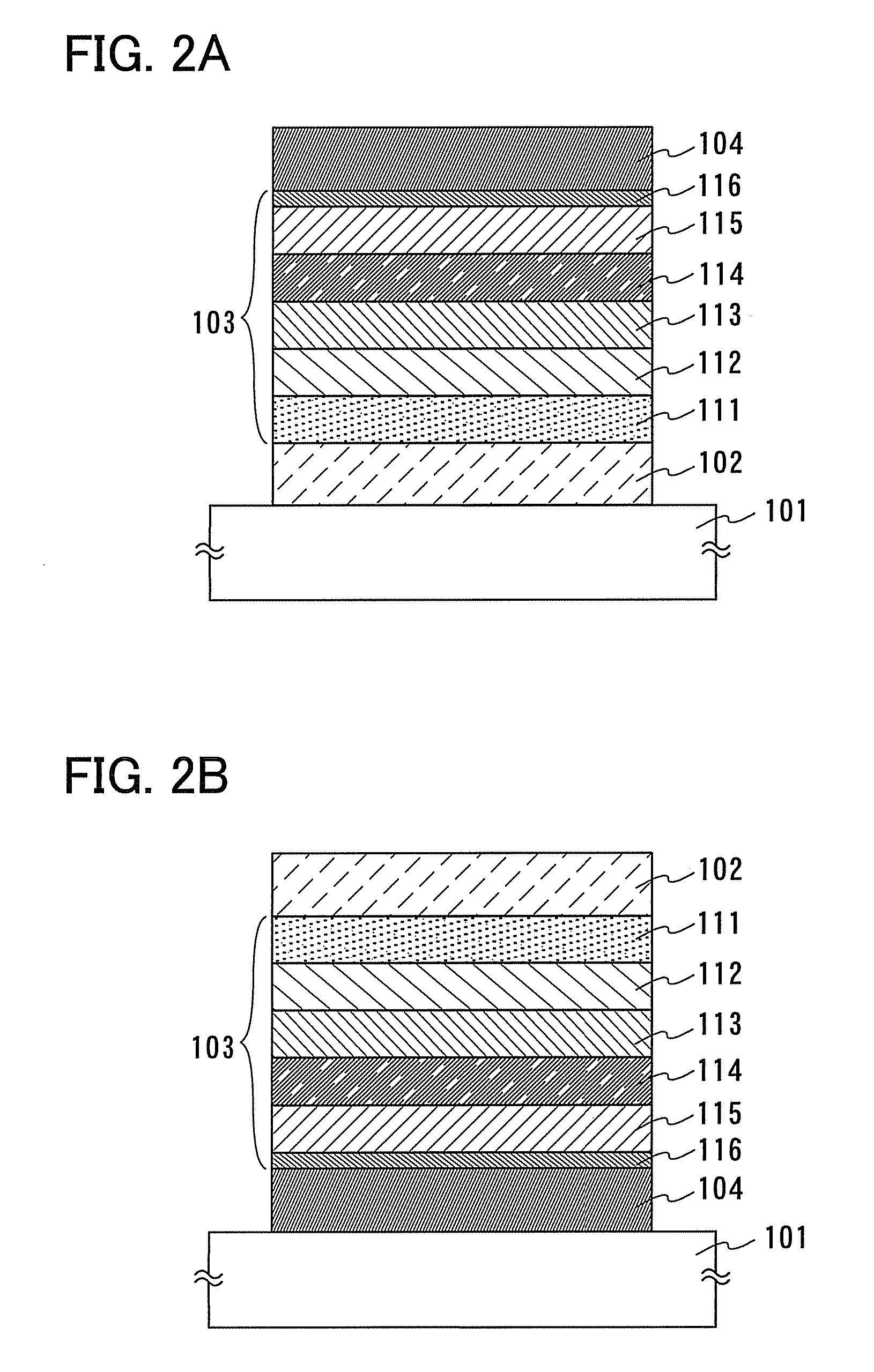Light-Emitting Element, Light-Emitting Device, and Electronic Appliance
- Summary
- Abstract
- Description
- Claims
- Application Information
AI Technical Summary
Benefits of technology
Problems solved by technology
Method used
Image
Examples
embodiment mode 1
[0064]In Embodiment Mode 1, a light-emitting element of the present invention, which has a structure that reduces the rate of transport of holes that are carriers of the light-emitting element, is described.
[0065]The light-emitting element in Embodiment Mode 1 includes a first electrode functioning as an anode, a second electrode functioning as a cathode, and an EL layer provided between the first electrode and the second electrode. The EL layer may be provided so that it includes at least a hole-injecting layer, a first hole-transporting layer, a second hole-transporting layer, and a light-emitting layer which are stacked in that order from the first electrode side, and that the highest occupied molecular orbital level (HOMO level) of the first hole-transporting layer is deeper (the absolute value is larger) or shallower (the absolute value is smaller) than the HOMO levels of the hole-injecting layer and the second hole-transporting layer. There is no particular limitation on other...
embodiment mode 2
[0127]In Embodiment Mode 2, a light-emitting element of the present invention, which has a structure that reduces the rate of transport of electrons in addition to the structure described in Embodiment Mode 1, which reduces the rate of transport of holes, is described.
[0128]The light-emitting element in Embodiment Mode 2 includes a first electrode, a second electrode, and an EL layer provided between the first electrode and the second electrode. The EL layer may be provided so that it includes at least a hole-injecting layer, a first hole-transporting layer, a second hole-transporting layer, a light-emitting layer, and a carrier control layer which are stacked in that order from the first electrode side, and that the highest occupied molecular orbital level (HOMO level) of the first hole-transporting layer is deeper (the absolute value is larger) or shallower (the absolute value is smaller) than the HOMO levels of the hole-injecting layer and the second hole-transporting layer. Ther...
embodiment mode 3
[0190]In Embodiment Mode 3, a light-emitting element having a plurality of EL layers of the light-emitting elements described in Embodiment Mode 1 and 2 (hereinafter, referred to as a stacked-type element) is described using FIG. 8. This light-emitting element is a stacked-type light-emitting element that has a plurality of EL layers (a first EL layer 803 and a second EL layer 804) between a first electrode 801 and a second electrode 802. Note that although a structure of two EL layers is described in Embodiment Mode 3, a structure of three or more EL layers may be employed.
[0191]In Embodiment Mode 3, the first electrode 801 functions as an anode and the second electrode 802 functions as a cathode. Note that the first electrode 801 and the second electrode 802 can be made to have structures similar to those described in Embodiment Mode 1. Further, for the plurality of EL layers (the first EL layer 803 and the second EL layer 804), structures similar to those described in Embodiment ...
PUM
 Login to View More
Login to View More Abstract
Description
Claims
Application Information
 Login to View More
Login to View More - R&D
- Intellectual Property
- Life Sciences
- Materials
- Tech Scout
- Unparalleled Data Quality
- Higher Quality Content
- 60% Fewer Hallucinations
Browse by: Latest US Patents, China's latest patents, Technical Efficacy Thesaurus, Application Domain, Technology Topic, Popular Technical Reports.
© 2025 PatSnap. All rights reserved.Legal|Privacy policy|Modern Slavery Act Transparency Statement|Sitemap|About US| Contact US: help@patsnap.com



